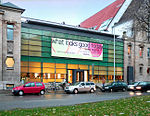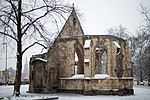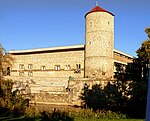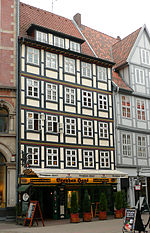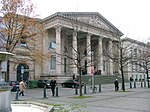Steintor (Hanover Stadtbahn station)
Commons category link is locally definedGerman rapid transit stubsHanover Stadtbahn stationsPages with no open date in Infobox station

Steintor is a Hanover Stadtbahn station served by all C and D lines. The C lines were built underground, which is the junction for all lines continuing west. Lines 4, 5 and 16 branch off eastwards towards the next station, Königsworther Platz (the latter one is the terminus at that station), while lines 6 and 11 branch off northbound, where the next station is Christuskirche.
Excerpt from the Wikipedia article Steintor (Hanover Stadtbahn station) (License: CC BY-SA 3.0, Authors, Images).Steintor (Hanover Stadtbahn station)
Goseriede, Hanover Centre (Centre)
Geographical coordinates (GPS) Address Nearby Places Show on map
Geographical coordinates (GPS)
| Latitude | Longitude |
|---|---|
| N 52.3758 ° | E 9.7325 ° |
Address
Steintor
Goseriede
30159 Hanover, Centre (Centre)
Lower Saxony, Germany
Open on Google Maps

